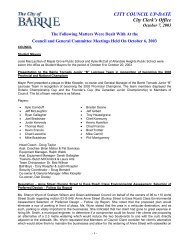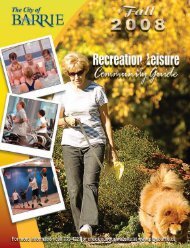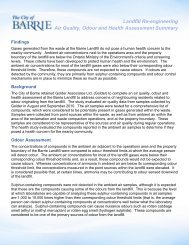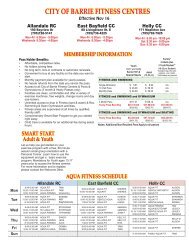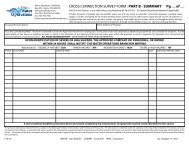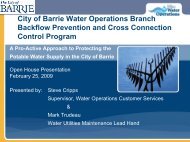Intensification Area Urban Design Guidelines - City of Barrie
Intensification Area Urban Design Guidelines - City of Barrie
Intensification Area Urban Design Guidelines - City of Barrie
Create successful ePaper yourself
Turn your PDF publications into a flip-book with our unique Google optimized e-Paper software.
6.1.2 Education Programs<br />
Developer Information Package<br />
The recommendations <strong>of</strong> this document are intended to<br />
assist the evolution <strong>of</strong> the <strong>Intensification</strong> <strong>Area</strong>s into active,<br />
pedestrian-supportive streets. Accordingly, the built form<br />
recommended varies significantly from the standard practice<br />
in <strong>Barrie</strong>. Recognizing this, it is recommended that the <strong>City</strong><br />
work with local developers and home builders to facilitate the<br />
transition.<br />
The Executive Summary in this document summarizes the<br />
evolution <strong>of</strong> the <strong>Intensification</strong> Nodes and Corridors, the<br />
<strong>Urban</strong> Growth Centre, and the Major Transit Station <strong>Area</strong>s, as<br />
well as the key objectives for each <strong>Intensification</strong> Typology.<br />
The <strong>City</strong> should use this information at initial meetings to help<br />
developers to navigate the guidelines and identify the core<br />
principles that the <strong>City</strong> is looking for within the <strong>Intensification</strong><br />
<strong>Area</strong>s.<br />
<strong>Design</strong> Checklist<br />
An <strong>Urban</strong> <strong>Design</strong> Checklist has been prepared to allow for the<br />
review <strong>of</strong> development and design proposals/applications<br />
in reference to the recommendations in this document. The<br />
purpose <strong>of</strong> the checklist is to facilitate the quick evaluation<br />
<strong>of</strong> designs to determine if a project conforms to the<br />
recommendations <strong>of</strong> these guidelines. It is recommended<br />
that designers evaluate their projects in advance <strong>of</strong> a<br />
submission to the <strong>City</strong> and identify any non-compliance on<br />
the checklist to be submitted with the application. This will<br />
assist <strong>City</strong> Staff with their evaluation and add transparency<br />
to the review process. A digital copy <strong>of</strong> the checklist should be<br />
made available on the <strong>City</strong>’s website.<br />
Regular Information Sessions<br />
On-going communication with residents, business owners<br />
and developers about the intensification guidelines should<br />
be undertaken, both before and after developments are<br />
proposed and built. A yearly update/discussion forum<br />
encourages public participation and education on the design<br />
<strong>of</strong> the <strong>Intensification</strong> <strong>Area</strong>s and is an opportunity to highlight<br />
examples <strong>of</strong> well executed developments that meet the <strong>City</strong>’s<br />
vision.<br />
<strong>Design</strong> Awards<br />
118<br />
<strong>Urban</strong> design awards acknowledge best practices and help<br />
to bring awareness to good urban design and its role in the<br />
community. It is recommended that the <strong>City</strong> <strong>of</strong> <strong>Barrie</strong> hosts<br />
urban design awards at least every three years, as this will<br />
provide the opportunity to celebrate successful pilot projects<br />
within the <strong>Intensification</strong> <strong>Area</strong>s. These awards should be<br />
coordinated with regular information sessions. Recognizing<br />
successful design projects at any scale should be a priority as<br />
it creates awareness <strong>of</strong> the importance <strong>of</strong> good urban design.<br />
6.1.3 Implementation, Monitoring and Updating<br />
Processes<br />
Implementation<br />
Status Quo<br />
Staff will implement the design guidelines as part <strong>of</strong> their<br />
review <strong>of</strong> development applications and in consultation with<br />
the public and members <strong>of</strong> the development community. It is<br />
recommended that the <strong>City</strong> make use <strong>of</strong> peer reviews wherever<br />
a second opinion or expertise in a specific field is required. If<br />
the <strong>City</strong> is finding they require peer reviews more frequently,<br />
they could transition to a more formalized <strong>Design</strong> Review<br />
Panel which focuses on larger development applications (i.e.<br />
brownfield sites.).<br />
DRAFT<br />
Peer Review<br />
Peer Review is a review process between the municipality<br />
and a third party peer reviewer that takes place following<br />
the initial review <strong>of</strong> a proposal. A Peer Review is beneficial<br />
as it allows development applications to be reviewed for<br />
their compliance with the urban design guidelines, but also<br />
independently based on the merit <strong>of</strong> the proposal.<br />
The recommendations that result from a Peer Review focus<br />
on requirements that result in a high quality and integrated<br />
development, are achievable and financially feasible.<br />
The final recommendations <strong>of</strong> the peer review will be<br />
considered by the <strong>City</strong>’s Planning Director, Manager <strong>of</strong><br />
Development Control, and Manager <strong>of</strong> Policy in the issuance<br />
<strong>of</strong> delegated Site Plan Approval. The Director will weigh these<br />
comments as all others and make the final decision. The<br />
decision can be appealed to the Ontario Municipal Board, as<br />
is the current practice.



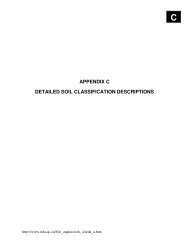
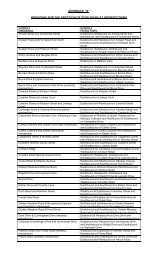


![Water Specification [DOC] - City of Barrie](https://img.yumpu.com/11698186/1/190x245/water-specification-doc-city-of-barrie.jpg?quality=85)

